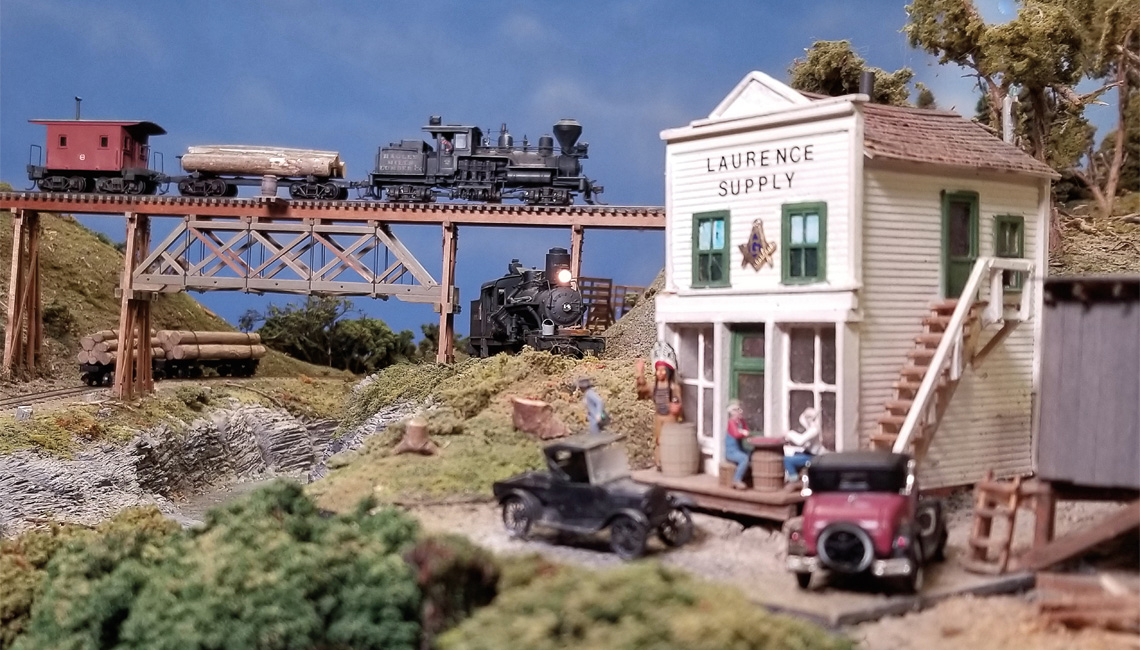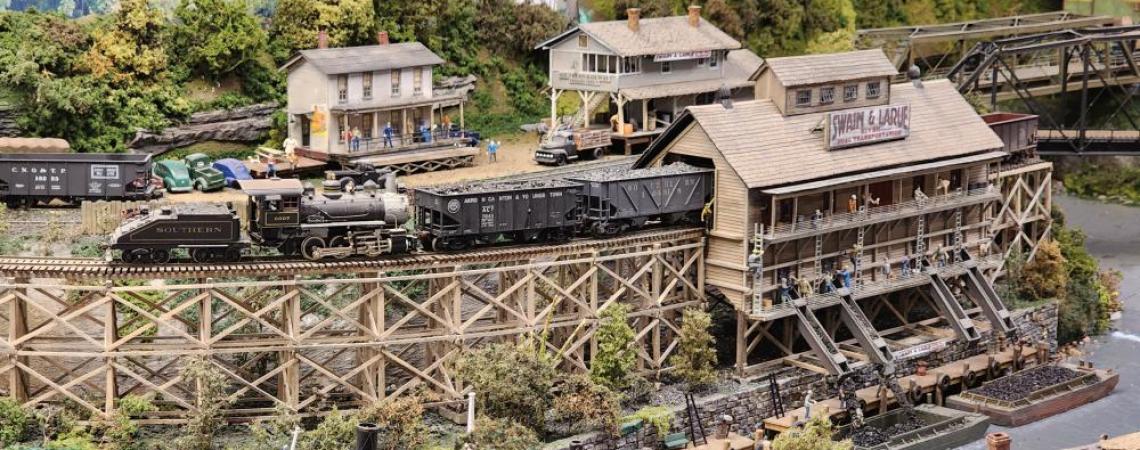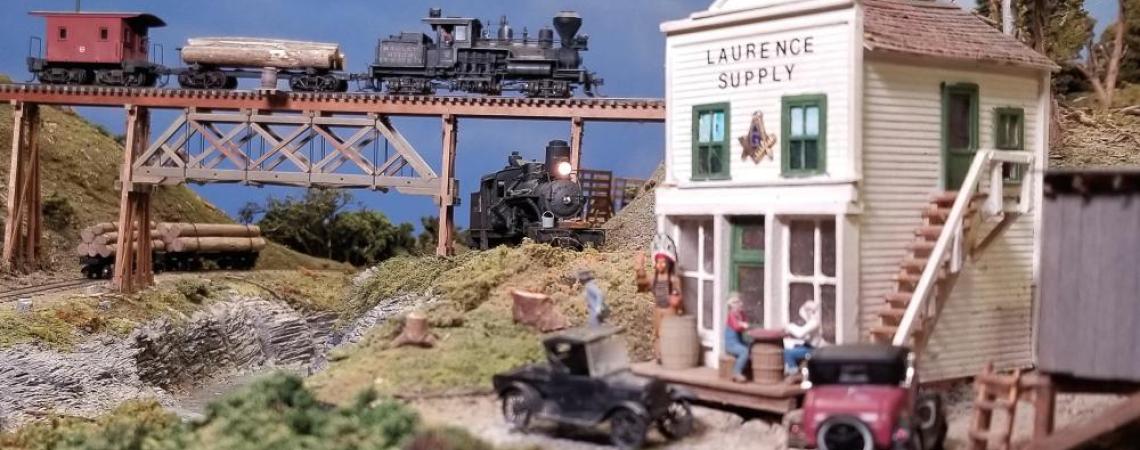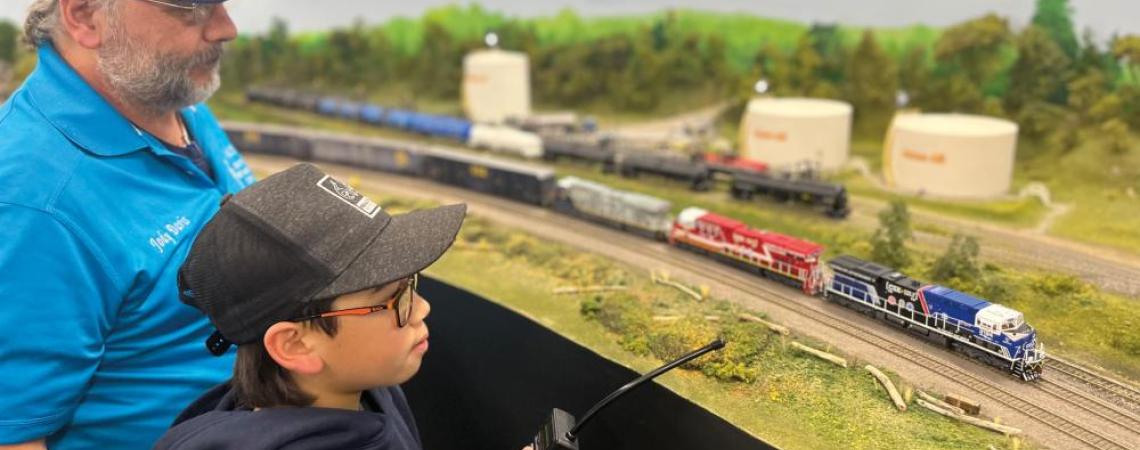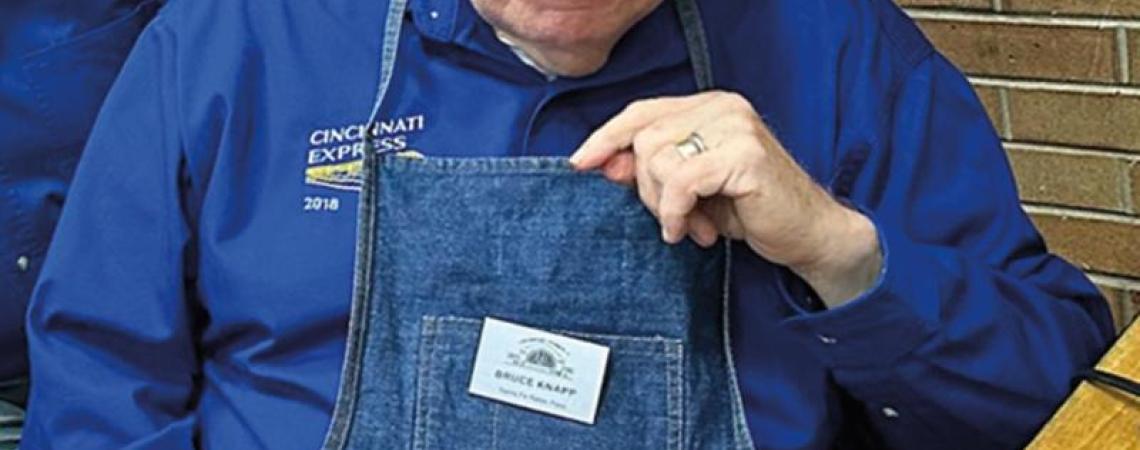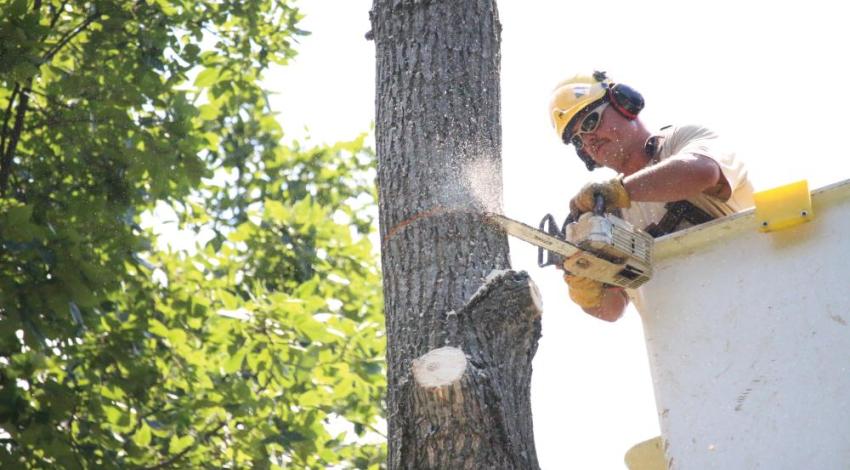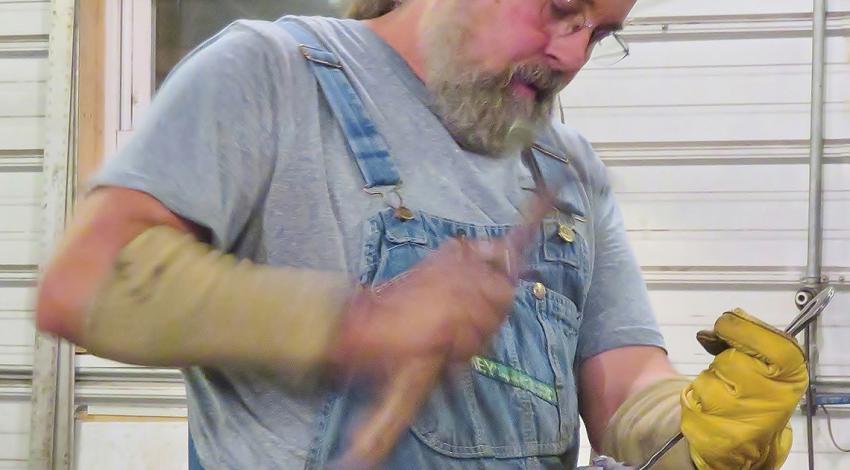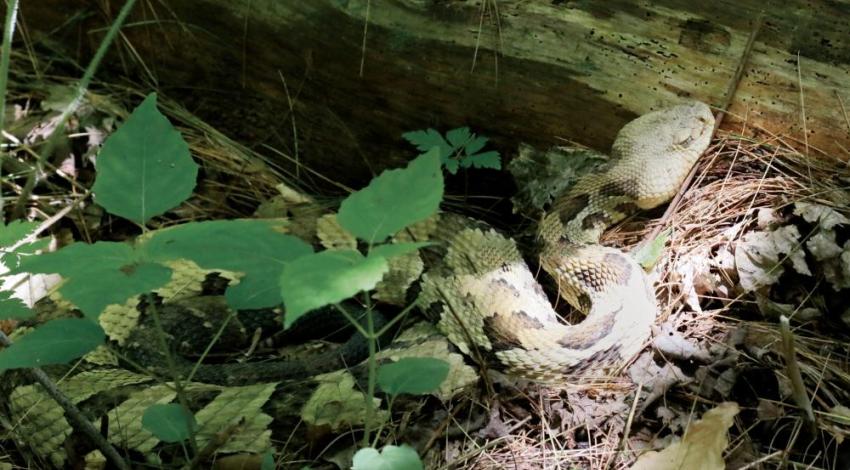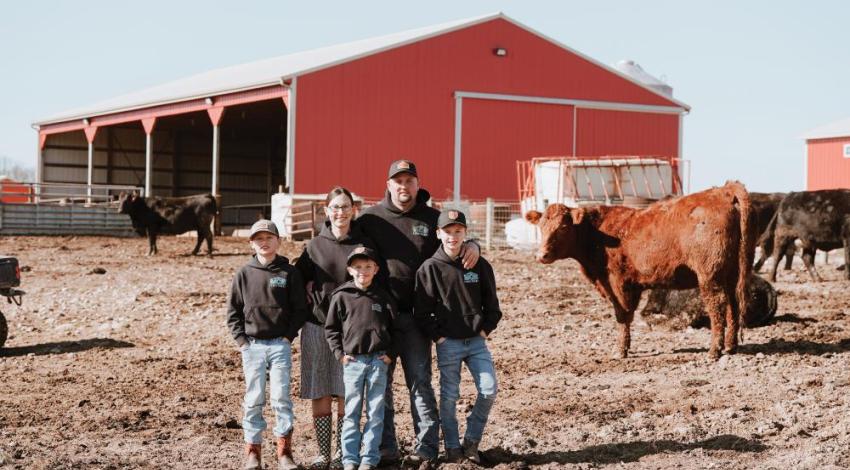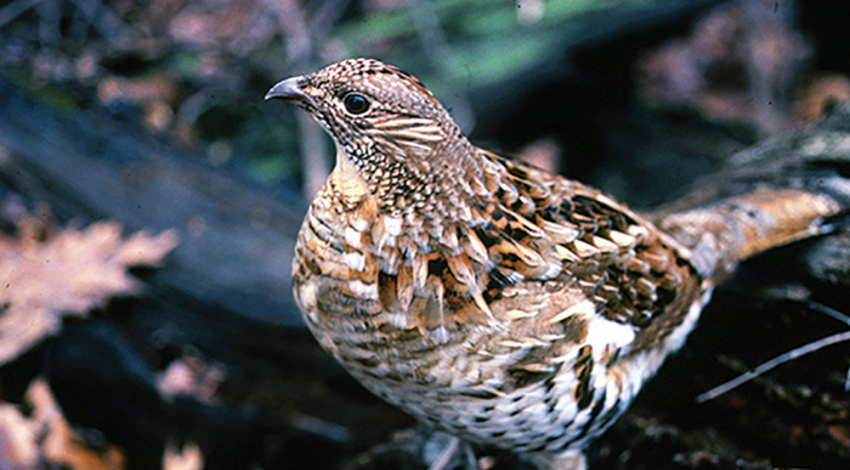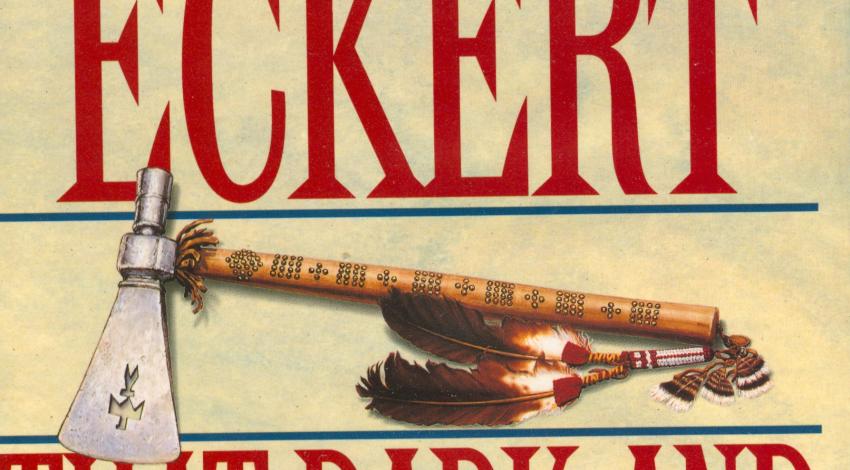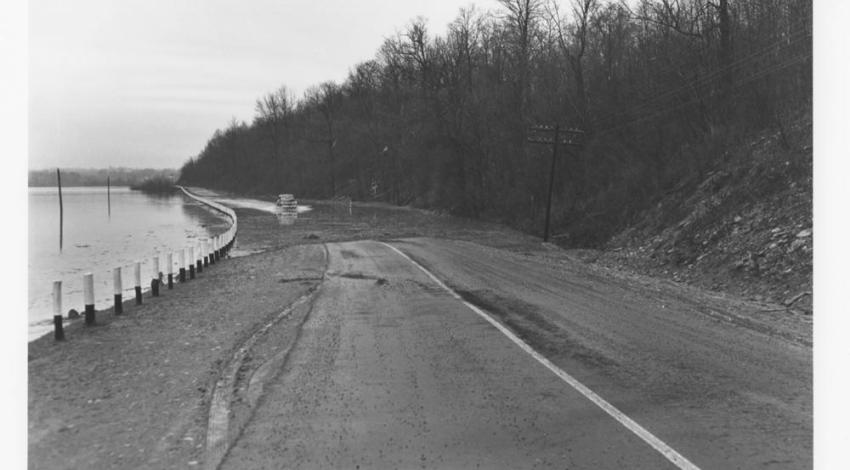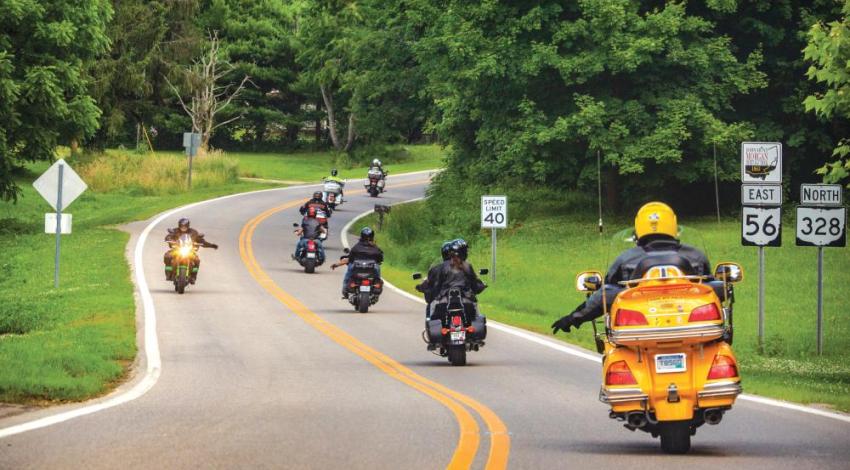Jody Davis got his first electric train for Christmas when he was 8 years old. But his love affair with trains started even earlier.
“Railroad tracks ran behind our house,” says Davis, a member of New Concord-based Guernsey-Muskingum Electric Cooperative. “When I was about 2, I remember insisting on being lifted up to stand in the kitchen sink and watch the train, even though it was the middle of the night.” Davis says he went back to sleep immediately after the trains passed, but he doesn’t think his parents were so fortunate.
Bob Lawson, a member of the Cincinnati chapter of the National Model Railroad Association, built this large HO-scale model of the Southern Railway, which traveled from Cincinnati to Chattanooga, in his Cincinnati-area home (photo courtesy of John Burchnall).
Davis joined Associated Model Railroad Engineers of Coshocton when he was 14, and currently, at 55, serves as president.
An early start
It’s a familiar story with model railroaders: A childhood fascination with trains leads to a Christmas or birthday gift of a model train set. Retired music educator Bruce Knapp, 81, of North Bend, is still an active participant and member of the National Model Railroad Association’s Cincinnati chapter.
“For my fourth birthday, my parents gave me a Marx windup train,” Knapp recalls. “When I was 8, I got an American Flyer at Christmas. My interest in model railroading grew from there.”
Knapp still has that American Flyer train and, he notes, “It still runs.”
American Flyer’s manufacturer, the Lionel Company, still makes electric trains. The American Flyer became a popular Christmas gift through advertising in the December issues of national magazines. The print ads usually featured a boy and his dad running their train near a Christmas tree. If a girl was included in the picture, she was in the background watching.
Such gender-specific advertising was typical of the way toys were marketed in the 1940s and 1950s, but Knapp says he has known many women who have been involved in model railroading for years. “Some of the best model railroaders are female,” he says.
All shapes and sizes
Model trains come in different sizes, measured by a particular scale. All of the components of a layout — the tracks, train cars and locomotives, buildings, and scenery — are made proportionate to that scale. This consistency adds to the realistic look of the entire layout.
Knapp’s railroad is made to HO scale, 1:87, which is among the most common and most popular. N scale is 1:160. Larger scales include S at 1:64 and O, which is 1:48. The tiny Z scale is 1:220.
Model railroaders can design their layout to portray an imaginary railroad, a railroad that is typical of a particular time period, or a real railroad traveling through a real geographic location.
Davis and the 50-member Coshocton club’s current project is the creation of an HO-scale layout of the Detroit, Toledo, and Ironton Railroad, which became part of the New York Central System. Club members meet every Friday to run the trains and work on the layout.
Knapp, meanwhile, is working on a model of the Santa Fe Railroad going through the Raton Pass. “I’m modeling the railroad as it was in 1951,” he says. “That was about the end of Santa Fe’s steam locomotives and also the first generation of diesels, an interesting combination of equipment.”
The Raton Pass is on the border of southern Colorado and northeastern New Mexico. Knapp has actually ridden through the railroad tunnel there numerous times when he travels on Amtrak from Chicago to Los Angeles to visit his brother.
One member of the Cincinnati club has designed his train layout to show the present-day CSX Railroad. Another member’s model railroad replicates the Colorado Western Railroad.
Knapp says that model railroaders search through old books and photographs in their efforts to make their layouts look as realistic as possible. This background research increases their knowledge of local history.
The hobby evolves
Model railroading is a hobby that adults and older children can enjoy together. Davis says some folks enjoy running the trains while others prefer doing construction or electrical work on the layout. “Personally, I enjoy building the buildings and adding colors on the locomotives.”
Knapp says that kids can learn a lot from it, including “history, geography, basic mechanics, carpentry, electronics, and more.”
In years past, analog control allowed a model railroader to run one train at different speeds and move it forward or backward, or stop it. Knapp says this type of setup is ideal for a beginner.
But model railroading isn’t a hobby stuck in the past. As with other hobbies and leisure interests, computers have changed it. The development of digital command control, or DCC, has given model railroad operators many more ways to enjoy their hobby. Knapp says DCC makes it possible to run several trains through larger, more complicated layouts at the same time.
“With DCC you can add lights flashing on and off and sounds, such as a diesel locomotive’s horn,” he says. “DCC has made a big change in my layout because it allows for precise control. It’s the ultimate for a model railroader.”
Knapp advises people who want to get started in model railroading to “go to a train show. Talk to the experienced model railroaders there before you start spending money. Also, check your public library for books on model railroading. Our club donates books every year to the Cincinnati Public Library.”
He adds, “When you are ready to buy, make sure you get good equipment that will hold up. Lionel makes models sized to most scales, though some are really expensive.”
Join the club!
There are model railroad clubs all around Ohio. Both Knapp and Davis urge anyone interested in model railroading to contact their nearest club, as visitors are always welcome.
Being involved in a model railroading club offers members several advantages. Besides the friendship of other members, expert help is readily available. Some model railroad clubs host a holiday open house for anyone who wants to watch their members’ trains in action. These events are especially fun for kids.
Here are only a few selected clubs around the state (most have websites and/or Facebook pages):
All Trains Bunch (Piqua); Associated Model Railroad Engineers of Coshocton; Central Ohio Model Railroad Club (Worthington); Central Ohio Ntrak (Columbus); Central Ohio S Gaugers (Gahanna); Cincinnati Northern Model Railroad Club (Hamilton); Crossroads Model Railroad Club (Vandalia); Cuyahoga Valley S Gaugers (Cleveland); Cuyahoga Valley Terminal Model Railroad Club (Cuyahoga Falls); Delaware County Model Railroaders Group (Sunbury); Guernsey Valley Model Railroad Club (Cambridge); Lima Model Railroad Club; Massillon Railroad Club; Mid-Ohio Valley Model Railroad Club (Parkersburg, W.Va.); National Model Railroad Association, Div. 5 (Mentor); National Model Railroad Association, Div. 7 (Cincinnati); Sebring Model Railroad Club; Southwestern Ohio S Scalers (Mason); Zane Trace and National Trail Model Railroad Club (Zanesville).
